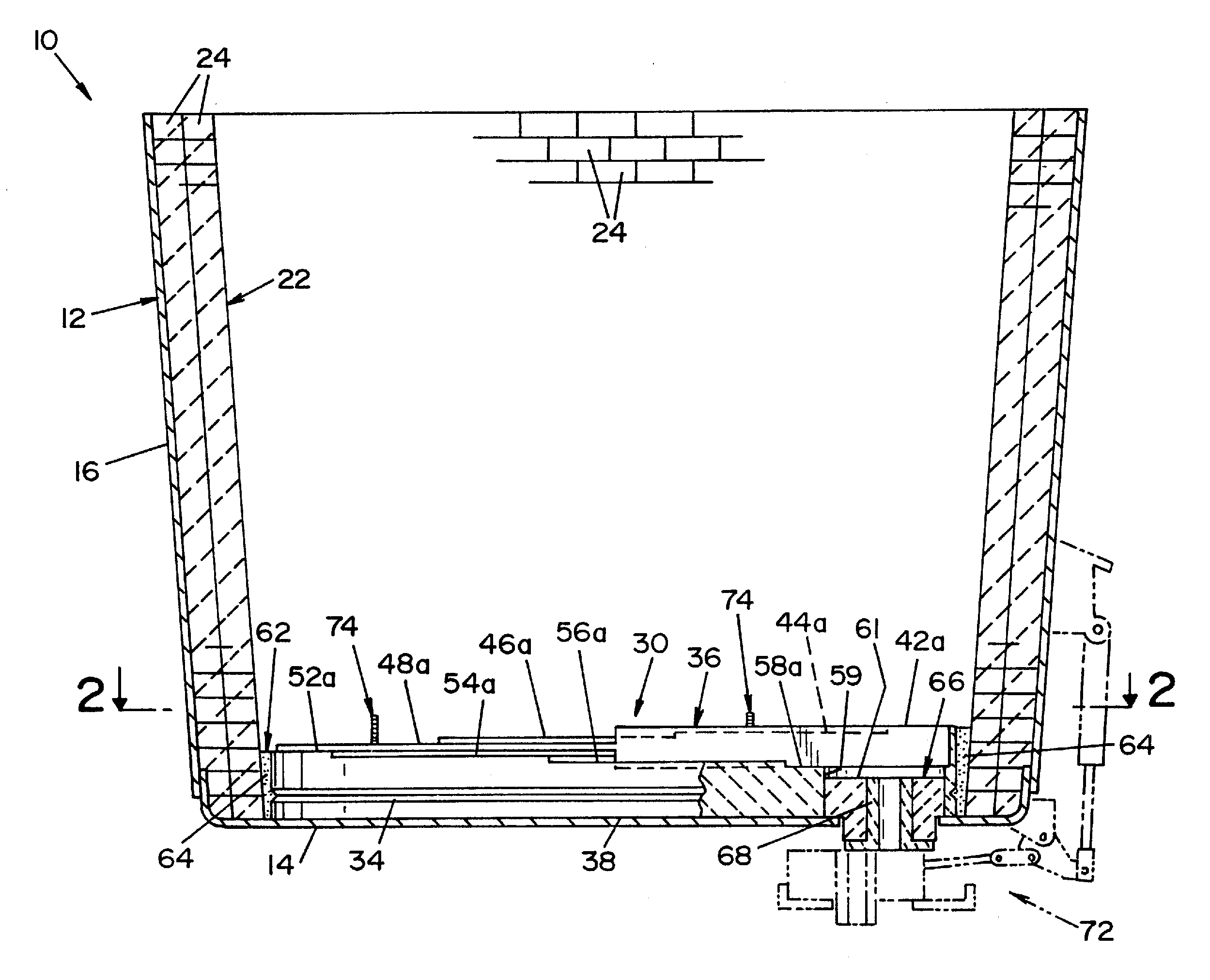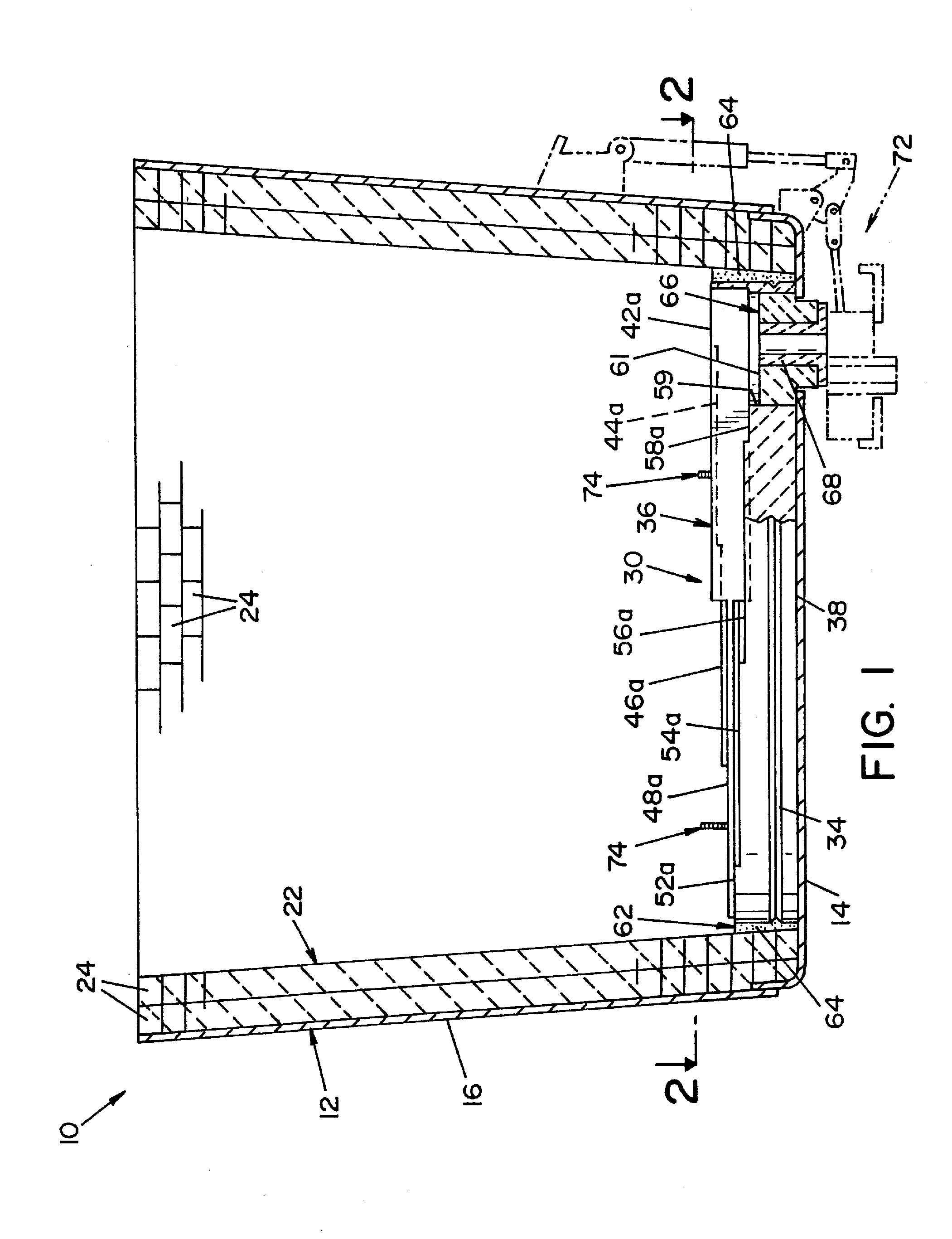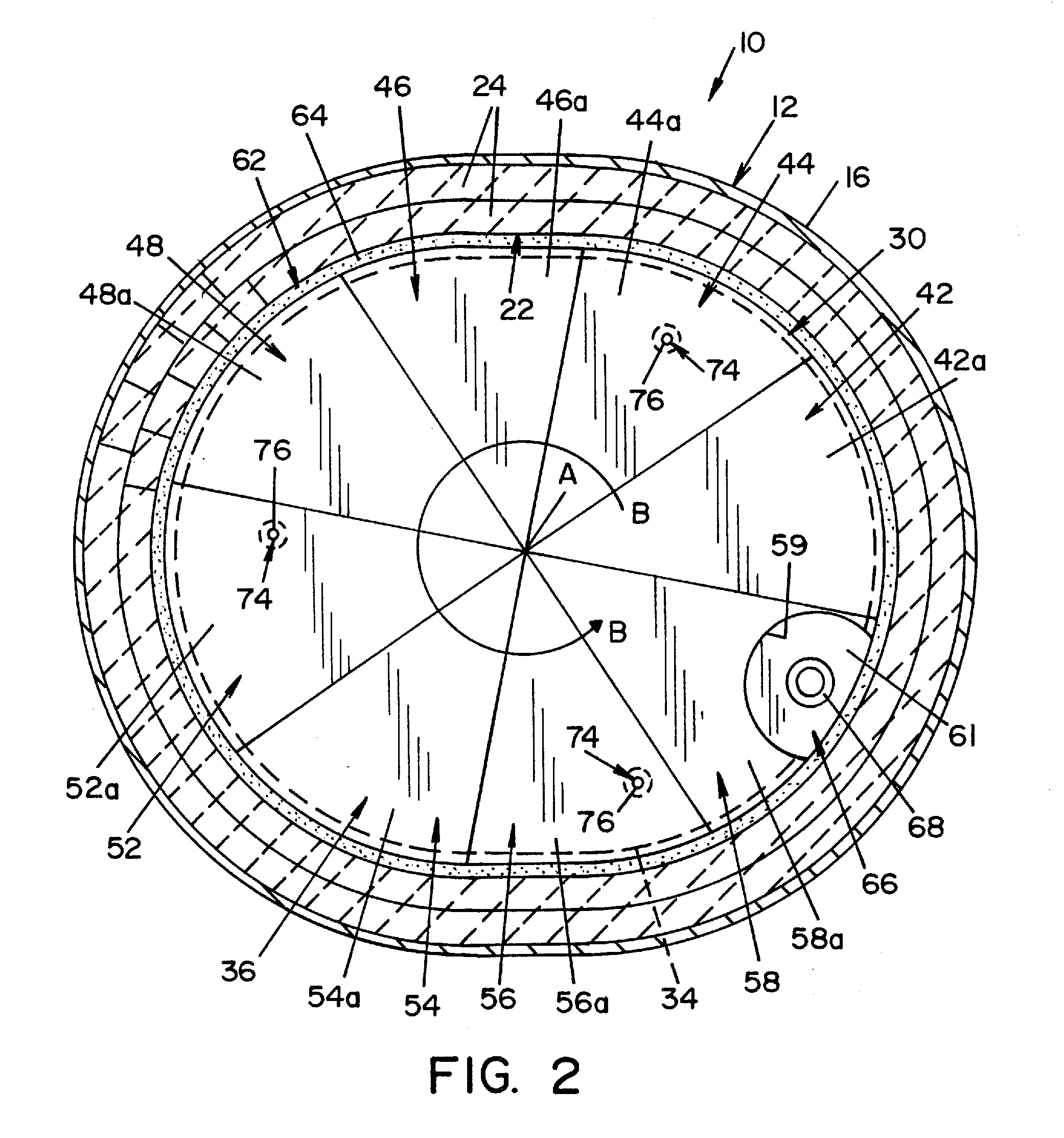High yield ladle bottoms
a technology of metallurgical vessels and ladles, which is applied in the direction of furnace floors, manufacturing converters, furnaces, etc., can solve the problems of certain amount of liquid metal remaining in the ladle, lower quality steel, etc., and achieve the effect of reducing the volume of molten metal remaining, reducing the amount of slag entrained, and increasing the yield of molten metal
- Summary
- Abstract
- Description
- Claims
- Application Information
AI Technical Summary
Benefits of technology
Problems solved by technology
Method used
Image
Examples
first embodiment
[0044]Referring now to FIGS. 1-3, bottom lining 30, illustrating the present invention, is shown. Bottom lining 30 has an upper portion comprised of discrete sections. In the embodiment shown, the upper portion of bottom lining 30 is comprised of an uppermost section 42, six (6) intermediate sections 44, 46, 48, 52, 54, 56 and a lowermost section 58. Uppermost section 42, intermediate sections 44, 46, 48, 52, 54, 56 and lowermost section 58 are each basically pie-shaped. Uppermost section 42, intermediate sections 44, 46, 48, 52, 54, 56 and lowermost section 58 are arranged such that each section extends from a center point “A,” best seen in FIG. 2. An opening 59 extends through the portion of bottom lining 30 defining lowermost section 58. Uppermost section 42 has an upper surface 42a, intermediate section 44 has an upper surface 44a, intermediate section 46 has an upper surface 46a, and so forth. Surfaces 42a, 44a, 46a, 48a, 52a, 54a, 56a, 58a are each disposed at a discrete eleva...
third embodiment
[0059]Referring now to FIGS. 6-7, a bottom lining 230 illustrating the present invention is shown. As best seen in FIG. 6, bottom lining 230 is generally oblong in shape and has an upper portion comprised of discrete sections. In the embodiment shown, the upper portion of bottom lining 230 is comprised of an uppermost section 242, two (2) intermediate sections 244, 246 and a lowermost section 258. Uppermost section 242, intermediate sections 244, 246 and lowermost section 258 are basically elongated sections that transverse the upper portion of bottom lining 230. Uppermost section 242 has an upper surface 242a and an edge 242b. Intermediate section 244 has an upper surface 244a and an edge 244b. Intermediate section 246 has an upper surface 246a and an edge 246b. Lowermost section 258 has an upper surface 258a. In the embodiment shown, edges 242b, 244b, 246b are parallel to each other. Surfaces 242a, 244a, 246a, 258a are each disposed at a discrete elevation and combine to form an u...
sixth embodiment
[0081]After ladle 10 is filled with a predetermined amount of molten metal, the casting of molten metal using bottom lining 530 in ladle 10 is similar in most respects to casting molten metal using bottom lining 30 in ladle 10. In the sixth embodiment, the slag adheres to surface sections 542, 544, 546, 548, 558. In addition, as molten metal drains from ladle 10, the molten metal above upper surface 536 and beneath the slag layer flows from successive surface sections 542, 544, 546, 548 of stepped portion 540 along a path “J-J” in a counter-clockwise direction.
[0082]Raised curb 592 causes the molten metal above lowermost section 558 and beneath the slag layer to separate and flow along first flow path “H-H” and second flow path “I-I.” According to the present invention, raised curb 592 is dimensioned and positioned such that first flow path “H-H” causes the molten metal to flow in a first direction toward first opening 559 and second flow path “I-I” causes the molten metal to flow i...
PUM
| Property | Measurement | Unit |
|---|---|---|
| refractory | aaaaa | aaaaa |
| elevation | aaaaa | aaaaa |
| volume | aaaaa | aaaaa |
Abstract
Description
Claims
Application Information
 Login to View More
Login to View More - R&D
- Intellectual Property
- Life Sciences
- Materials
- Tech Scout
- Unparalleled Data Quality
- Higher Quality Content
- 60% Fewer Hallucinations
Browse by: Latest US Patents, China's latest patents, Technical Efficacy Thesaurus, Application Domain, Technology Topic, Popular Technical Reports.
© 2025 PatSnap. All rights reserved.Legal|Privacy policy|Modern Slavery Act Transparency Statement|Sitemap|About US| Contact US: help@patsnap.com



